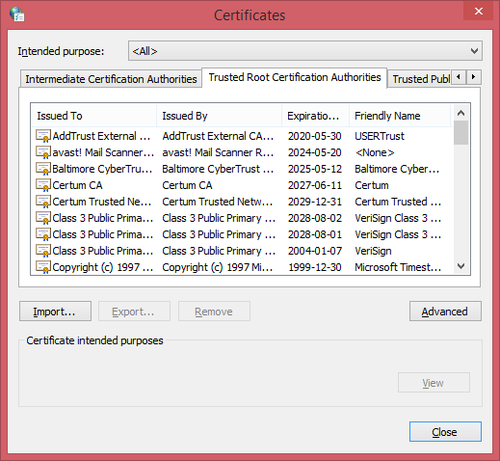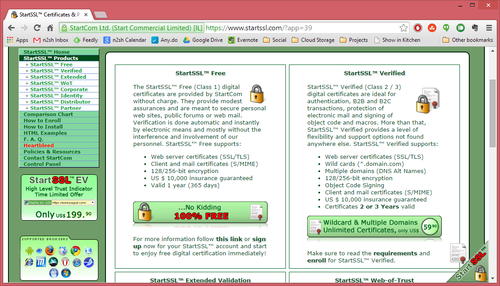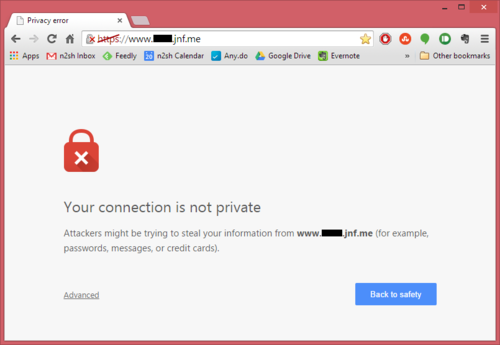Recently, for reasons I’m sure I’ll write about in the
future, I needed to find a way to use JavaScript to test if either of two
web-locations are accessible – my home intranet (which would mean the user is on
my network), or the corporate intranet of the company for which I work (which
would mean the user is on my organization’s network). The page doing this test
is on the public web.
My solution for doing this test was simple. Since neither
resource is accessible publicly I put a small JavaScript file on each, then I
use AJAX and jQuery to try and fetch it. If
that’s successful, I know the user has access to whichever intranet site served
the request and my page can react accordingly.
If neither request is successful I don’t have to do
anything, but the user doesn’t see any errors unless they choose to take a look
in the browser console.

This all worked wonderfully until I enabled SSL on the page
that needs to run these tests, then it immediately fell apart.

Both requests fail, because a page served over HTTPS is
blocked from asynchronously fetching content over an insecure connection. Which
makes sense, but really throws a spanner into the works for me: neither my home
nor corporate intranet sites are available outside the confines of their safe
networks, so neither support HTTPS.
My first attempt at getting around this was to simply change
the URL prefix for each from http:// to https:// and see what happened. Neither
site supports that protocol, but is the error that comes back different for a
site which exists but can’t respond, vs. a site which doesn’t exist? It appears
so!

Sadly, my joy at having solved the problem was extremely
short lived. The browser can tell the difference and reports as much in the
console, but JavaScript doesn’t have access to the error reported in the
console. As far as my code was concerned, both scenario was still identical
with a HTTP response code of 0 and the status description worryingly generic “error.”
We are getting closer to the solution I landed on, however.
The next thing I tried was specifying the port in the URL. I used the https://
prefix to avoid the “mixed content” error, but appended :80 after the hostname
to specify a port that the server was actually listening on.

This was what I was looking for. Neither server is capable
of responding to a HTTPS request on port 80, but the server that doesn’t exist
immediately returns an error (with a status code of 0 and the generic “error”
as the descriptive text), but the server that is accessible simply doesn’t
respond. Eventually the request times out with a status code of 0 but a status
description, crucially, of “timeout.”
From that, I built my imperfect but somewhat workable
solution. I fire a request off to each address, both of which are going to
fail. One fails immediately which indicates the server doesn’t exist, and the
other times-out (which I can check for in my JavaScript), indicating that the
server exists and I can react accordingly.
It’s not a perfect solution. I set the timeout limit in my
code to five seconds, which means a “successful” result can’t possibly come
back in less time than that. I’d like to reduce that time, but when I
originally had it set at 2.5 seconds I was occasionally getting a
false-positive on my corporate network caused by, y’know, an actual timeout
from a request that took longer than that to return in an error state.
Nevertheless if you have a use-case like mine and you need
to test whether a server exists from the client perspective (i.e. the response
from doing the check server-side is irrelevant), I know of no other way. As for
me, I’m still on the lookout for a more elegant design. I’m next going to try
and figure out a reliable way to identify if the user is connected to my home
or corporate network based on their IP address. That way I can do a quick
server-side check and return an immediate result.
It’s good to have this to fall back on, though, and for now
at least it appears to be working.




